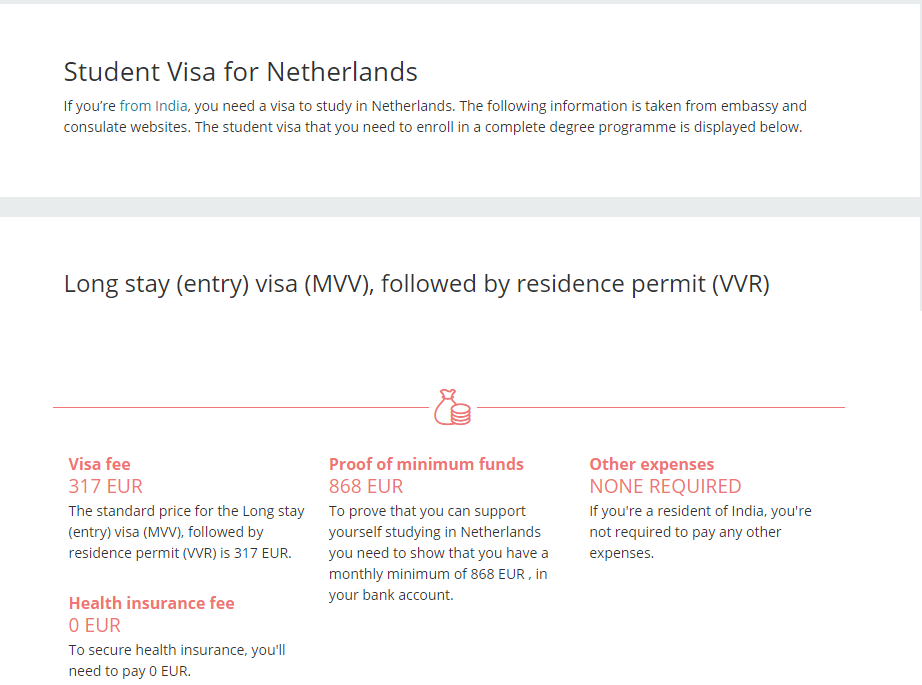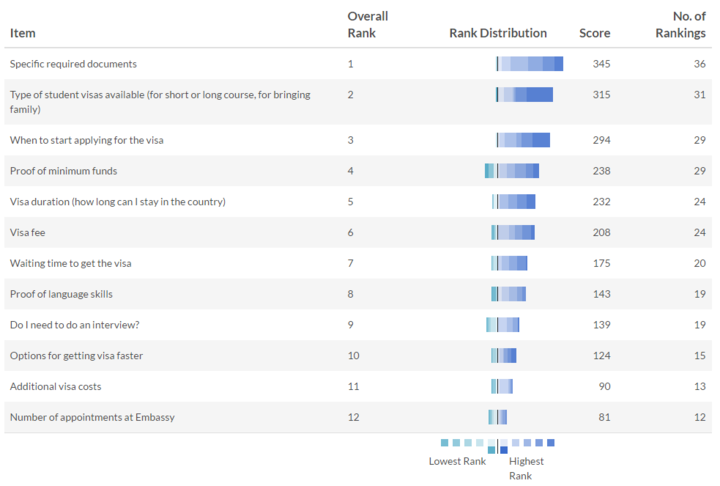Visa info to mobilise international students | part 2

This is the second article in a series documenting the processes and steps we take towards improving and innovating our platform. By understanding the student journey in and out, we’ll show how a platform can be built that is valuable to students and agile to the demands of international education.
Stay tuned and see the various insights we continue to gain as we continue to build, adapt, and create the biggest education search platform, bringing absolute transparency and reliability to international education.
Part II: Visa information
Before students can go to a new country to start living abroad during their studies, there are lots of legal and bureaucratic hurdles to leap before they can get there. Students need to acquire a visa that gives them the rights to live, stay, study, and – sometimes even – work in another country.
Perhaps you’ve never had to look up visa information before. But typically, it’s a 25-page document, buried on a country’s immigration website, that people have to download and scan through. The content is often outdated, written in the most complicated legalese imaginable – and that’s just to find out how you apply for one. Forget trying to find out what the exorbitant fees are.
We think this information should not only be readable; it should be easy to find. After all, securing a visa is a major requirement for being able to go abroad, and can be one of the most complicated steps on the path to enrolling and studying.
Empowering students with information
Our platforms are designed to act as a companion for students on their journey to studying abroad. Basically, no matter what point a student is at on the search for education options and information, we provide answers to any question she may have before proceeding. Because getting a visa is such a crucial, make-or-break step in the process, that the information and instructions need to be comprehensive and accurate. It’s an integral part of our overall mission: making students the heroes of their stories, giving them the tools they need to pursue an education anywhere in the world.
So long as students can find this information and can read it in a clear, concise way, they can be well-prepared to start their education, without having to worry.
Displaying visa information
Our platforms are already equipped with country pages that outline basic information, including living costs, student life, educational structure, and a bit of history. Within those pages, there is also a section devoted strictly to student visas.
When students arrive on this page they can find a breakdown of information they need to prepare their visa applications. This information includes:
- When they should start applying
- Application waiting time
- How long the visa is valid
- The visa fee
- The health insurance fee
- Whether they need to prove language skills and funding
- Any other details, specifically required for that country.
Based on the research that our team has gathered, we were able to distil the basic information into an easy-to-read page:

So that students don’t feel overwhelmed by the complicated information surrounding visas and visa requirements, we’ve made it much easier for them to digest.
The best part is that, when students go on our site, they can select which country they are from at the top of the visa page, and then receive information that is specific to them and their situation. This way, students not only find all of the information they are looking for; they don’t have to expend too much information figuring out which information is relevant to them.
Deciding to display visa information
As mentioned in the previous post of this series, Studyportals will often survey student users to find out what information they seek when they’re deciding to study abroad. Admission chance was certainly one of these aspects; but displaying visa requirements was also high on that list.
In fact, when we surveyed over 400 registered users of whom a majority were university-age users with a Bachelor’s degrees, we discovered that, after tuition fees, scholarship, living cost, and chance of being admitted, students are especially keen to know what the visa requirements are.

Of course, this makes sense. Just thinking of applying for a visa can give anyone a headache. But because it’s understood as a vital part of moving abroad, everyone knows they have to go through it sooner or later. The least we could do is make that information more transparent and readable to the 29 million students who use our platform each year.
When we decided we were going to display the visa information, we also wanted to know what specific visa information they needed. Do they want to know more about the fees, which supporting documents they need or the embassy locations? Surprisingly, there were lots of details students wanted; but it was very clear which requirements they cared to know the most.

Based on this data, too, we were able to clearly see which information should be prioritised on our portals.
As a result, we then proceeded to organise and display information in a shorter manner. We want to be comprehensive, of course; but we also don’t want to waste a student’s time. So, to accommodate the demand for this information, we designed the page in a manner that shows the precise details, requirement, and information most students are looking for.
Displaying visa information and education transparency
Lots of students dream about going abroad and living in a new country – either to meet new people, to learn about a new culture or language, or to simply explore. But, for many students, the mere thought of it can be daunting.
A lot of that anxiety comes from thinking that it’s not even something that they can do legally or easily. For students, especially, it seems like it can be a lot harder to find visa information and to know whether going abroad is even a possibility.
Often students will instead turn to the university help, causing the international offices to become overwhelmed with a barrage of questions about student visas. Instead, our system helps mitigate some of that burden. Rather than turning to the university office – which can often take a long time, and can be difficult internationally – students can find the information displayed clearly on our portals.
By showing students everything they need to know about the visas they need, in one place, they are better equipped to make studying abroad a reality. This is especially relevant for students who don’t have the privilege of international mobility (such as EU students do, for example). But, when we provide this information directly on our portals, alongside detailed information about studying abroad, students can easily learn that studying abroad in the country of their choice is actually feasible.
Further reading
Part V – encouraging early website registrations
Part IV – mobile-friendly display
Part III – improving search results
Part I – adding transparency about admission chances
About the series – introduction





